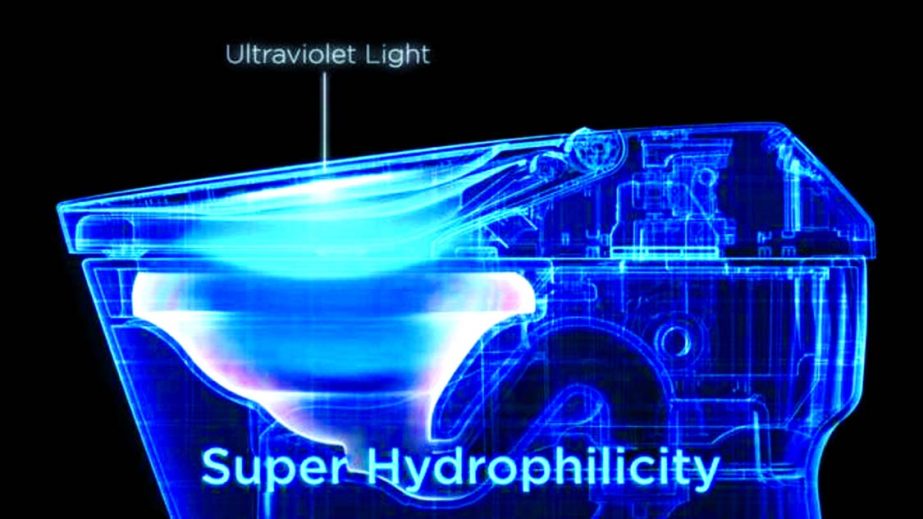
BBC Online :
An “intelligent” toilet that opens when you approach it and self-cleans with every flush is on display at the Consumer Electronics Show in Las Vegas.
It also cleans the user with an aerated wand, which delivers warm water and warm air “from a seated position”, a spokeswoman said.
Despite a $9,800 (£6,704) price tag, more than 40 million earlier versions of the Neorest toilets have been sold.
Bathroom firm Toto said the new prototype was still in development.
Its self-cleaning process uses a combination of a disinfectant and a glaze – made out of zirconium and titanium dioxide – which coats the bowl.
“Once it flushes it sprays the interior of the bowl with electrolysed water,” explained Toto spokeswoman Lenora Campos.
She said the “proprietary process” essentially turns the water into a weak bleach.
“This bleaches the interior, killing anything in the bowl,” said Ms Campos.
Meanwhile an ultraviolet light in the lid charges the surface.
That makes it super-hydrophilic – or water-loving, so nothing can stick to it – and also photocatalytic, enabling oxygen ions to break down bacteria and viruses.
An “intelligent” toilet that opens when you approach it and self-cleans with every flush is on display at the Consumer Electronics Show in Las Vegas.
It also cleans the user with an aerated wand, which delivers warm water and warm air “from a seated position”, a spokeswoman said.
Despite a $9,800 (£6,704) price tag, more than 40 million earlier versions of the Neorest toilets have been sold.
Bathroom firm Toto said the new prototype was still in development.
Its self-cleaning process uses a combination of a disinfectant and a glaze – made out of zirconium and titanium dioxide – which coats the bowl.
“Once it flushes it sprays the interior of the bowl with electrolysed water,” explained Toto spokeswoman Lenora Campos.
She said the “proprietary process” essentially turns the water into a weak bleach.
“This bleaches the interior, killing anything in the bowl,” said Ms Campos.
Meanwhile an ultraviolet light in the lid charges the surface.
That makes it super-hydrophilic – or water-loving, so nothing can stick to it – and also photocatalytic, enabling oxygen ions to break down bacteria and viruses.

